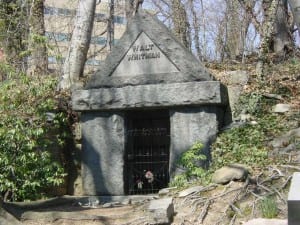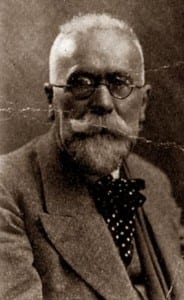This Wednesday’s session, which takes place in MB1019 at the slightly later time of 5pm, will feature Professor Jason Whittaker (University of Lincoln) talking on ‘Cleaving: Blake, Whitman and the aggravations of influence’.
Abstract
“Blake began and ended in Blake.“ Horace Traubel, With Walt Whitman in Camden, vol. 2, p. 99
We should perhaps not make too much of the observation by Horace Traubel, visiting Walt Whitman in the 1880s, that the poet used a volume of Blake for a footstool. More significantly, writing privately in 1868 on the publication of Algernon Swinburne’s William Blake: A Critical Essay, Whitman noted that while both he and Blake were mystics and “extatics“, the differences between them were vast – that the author of the Song of Myself “never once lost control, or even equilibrium” (Clews and Indirections, p.53).
This talk will not return to the exhausted discussions of what influence Blake had on Whitman; as Ryan Davidson observes, most of the supposed “points of contact” between the two were not available to Whitman when began writing Leaves of Grass. Rather, it will propose a more dynamic alternative to Bloom’s theory of influence, one which considers less the effects of one “strong” poet reading a predecessor and which instead examines the impact of “strong” readers who insist upon similarities between one writer and another. Contemporaries such as Swinburne, William Rossetti and Anne Gilchrist saw clear resemblances between Blake and Whitman: for Harold Bloom (another reader who linked Blake and Whitman as the most “daemonised” poets), clinamen is a swerving away in the search to establish an original voice, but in many cases it may be better thought of as the process of cleaving to the precursor via the responses of others, whether this be welcome to the poet or not.
Davidson suggests that we consider an affinity of influence rather than adversarial conflict, alongside which Raymond Williams’s notion of “structures of feeling” can be helpful in considering ways in which transatlantic confluences during the late eighteenth and early nineteenth centuries gave rise to similarities between Whitman and Blake. More than this, however, the paper will explore some of the ways in which specific activities in the book trade brought greater awareness of Blake after publication of Leaves of Grass, enabling a generation of critics to construct networks of reception between the two poets as well as offering a material apophrades for Whitman, who first grudgingly came to appreciate Blake via the printed quality of Gilchrist’s Life of William Blake and eventually commissioned his tomb in the shape of the Romantic’s engraving of “Death’s Door”.
To readers in England in particular, it seemed that Blake and Whitman shared a common affinity – as Whitman remarked somewhat sardonically to Trabel, “A number of the fellows in England are off after Blake“. The irony is that had the former poet’s works been more widely available in the years immediately following his death, the later writer would certainly have swerved away from the earlier influence. That Whitman did not know of Blake’s works when composing Leaves of Grass is, then, what enabled later readers to cleave the two together more closely.
Biography
Professor Jason Whittaker is Head of the School of English and Journalism at the University of Lincoln. He has written extensively on William Blake, particularly with regard to his posthumous influence, and his books include William Blake and the Myths of Britain (1999), Radical Blake: Influence and Afterlife since 1827 (with Shirley Dent, 2002), Blake, Modernity and Popular Culture (with Steve Clark, 2008), Blake 2.0: William Blake in Twentieth-Century Art, Music and Culture (with Steve Clark and Tristanne Connolly, 2012), and William Blake and the Digital Humanities (with Roger Whitson, 2013). He is currently working on a book dealing with the past hundred years of the hymn “Jerusalem”.




Recent Comments